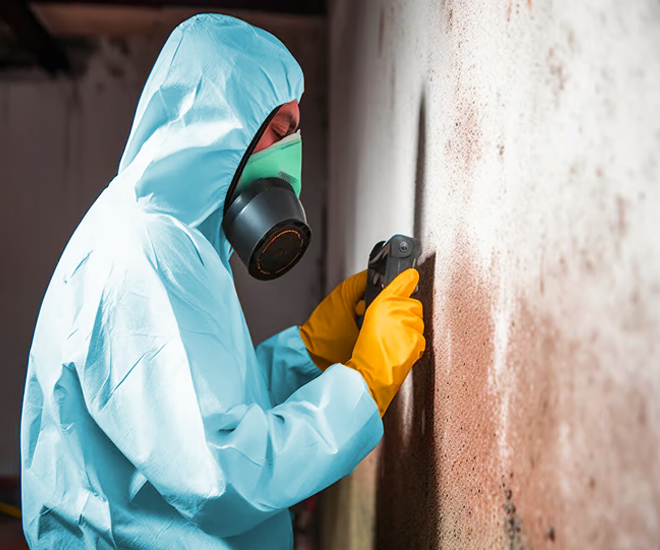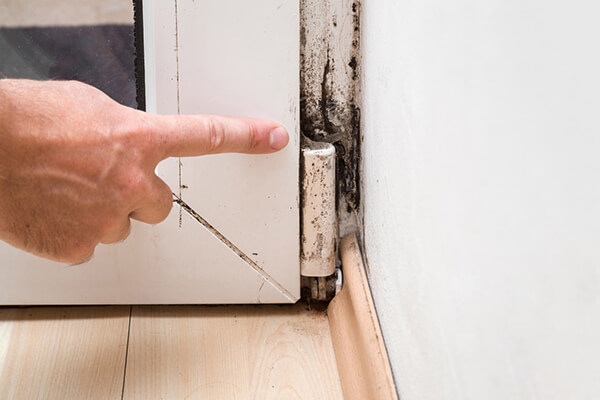Testing Air Quality After Mold Remediation
Your Ultimate Overview to Post Mold Removal Strategies
In the consequences of mold and mildew invasion, understanding how to properly remove the mold and stop its reoccurrence is vital for preserving a healthy and balanced interior atmosphere. From selecting the best cleaning and decontaminating techniques to implementing methods for lasting mold prevention, each step in the remediation journey plays an essential duty in guaranteeing an effective end result.
Comprehending Post-Mold Removal Process
After completing the mold and mildew remediation procedure, it is critical to recognize the post-mold remediation techniques that are required to make certain a effective and complete clean-up. Once the mold has actually been gotten rid of, the following step involves cleaning and sanitizing the influenced areas to protect against any type of regrowth of mold and mildew. This consists of utilizing specialized cleaning agents to clean down surfaces and kill any type of continuing to be mold spores. It is necessary to dry out the area totally to dissuade the growth of mold and mildew in the future (what to do after mold remediation). Proper ventilation and dehumidification can help in this process.
Furthermore, carrying out a final evaluation post-remediation is crucial to make certain that all mold has actually been successfully eradicated. If the inspection reveals any lingering mold, additional remediation may be necessary.
Effective Cleaning and Sanitizing Techniques

Preventing Future Mold And Mildew Growth

Significance of Proper Air Flow
Appropriate air flow plays an essential duty in avoiding moisture buildup, a key consider mold and mildew growth within interior environments. Efficient air flow systems aid remove excess humidity from the air, reducing the chances of mold spores finding the moisture they require to spread out and sprout. Without appropriate air flow, indoor areas can become a breeding place for mold and mildew, causing potential his explanation health and wellness risks and structural damage.
By ensuring appropriate air circulation, ventilation systems can additionally assist in drying damp locations faster after water damages or flooding events, better discouraging mold and mildew growth. Post Mold remediation cleaning. In spaces like washrooms, kitchen areas, cellars, and attics where moisture levels have a tendency to be higher, setting up and keeping effective ventilation systems is vital in preventing mold problems

Monitoring and Upkeep Tips
Provided the important duty that proper ventilation plays in protecting against mold and mildew growth, it is critical to establish efficient surveillance and upkeep suggestions to make certain the continued performance of air flow systems. Surveillance humidity degrees within the building is additionally crucial, as high humidity can contribute to mold growth. By staying conscientious and aggressive to the condition of ventilation systems, building owners can efficiently alleviate the threat of mold regrowth and maintain a healthy interior setting.
Conclusion
Finally, post-mold remediation techniques are essential for guaranteeing a clean and secure setting. Recognizing the process, executing effective cleansing and sanitizing methods, preventing future mold and mildew development, maintaining correct air flow, and routine monitoring are all crucial action in the removal process. By following these standards, you can effectively get rid of mold and stop its return, advertising a healthy and balanced living or working area for all passengers.
In the aftermath of mold invasion, understanding just how to Bonuses properly get rid of the hop over to here mold and mildew and prevent its reoccurrence is vital for keeping a healthy indoor environment. Once the mold and mildew has actually been gotten rid of, the next step involves cleansing and sanitizing the impacted areas to protect against any type of regrowth of mold and mildew - testing air quality after mold remediation. After eliminating noticeable mold growth, it is vital to clean all surfaces in the afflicted area to remove any staying mold and mildew spores. To better enhance mold avoidance measures, it is vital to resolve underlying issues that at first led to mold and mildew growth.Provided the important role that appropriate air flow plays in preventing mold development, it is important to establish effective monitoring and upkeep suggestions to make sure the continued capability of air flow systems